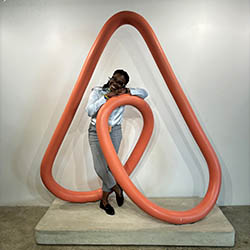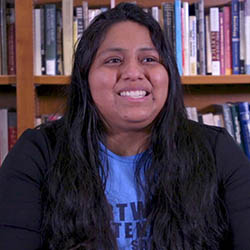Practice Really Does Make Perfect
When Hartwick was remote during COVID, students couldn’t get into the lab or do their clinicals on-site. Professor Melody Best, ‘06, and her colleagues improvised and put their own hands to work. Equipped with cameras and microphones, senior nursing students virtually directed the care in the simulations, with the professors implementing their instructions. The students were able to graduate on time, and with a 92.59 percent pass rate on the NCLEX exams.
Noelle, a new mother, is lethargic. Her heart rate is high, her blood pressure plummeting. But student nurse Lauren Kutch ’22 knows exactly what to do. “I assessed Noelle’s vitals and concluded she was having postpartum hemorrhage,” Kutch says. “We needed to call her provider.” It was the right decision, and Kutch saved the patient.
It sounds like real life, and felt that way to Kutch and her nursing student colleagues. In fact, this was just one of several of the day’s scenarios performed using the realistic obstetrical simulators in the new hospital wing of Hartwick’s Clark Simulation Lab.
Incorporating simulation into a Hartwick nurses’ education has become a priority in recent years.
“Students need to become comfortable with patient care in a setting that’s safe for them so that when they have that first real patient, they know what they have to do,” explains Department Chair and Clinical Associate Professor Pat Grust, PhD, RN, CLNC.
Muscle memory is a key component of the practice, says Assistant Professor of Nursing Melody Best ’84, PhD, WHNP, RN-C, and simulations strengthen that. “Simulation is how you make the learning come out of your hands,” she explains.
Professor Melody Best ‘06 takes a hands-on approach to labor and delivery with student Lauren Kutch ’22 in Hartwick’s simulated hospital unit.
Back in Hartwick’s hospital unit, a professor gives four students an overview of what they can expect in the next simulation exercise. Each member has a part to play: primary or secondary nurse, the observer, or the patient’s family member.

